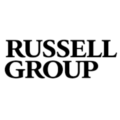The Hidden Costs of Poor Facilities Management for Hybrid Workplaces
In this guest post from Hereworks Solve, a HubStar partner and leader in smart building technology, we explore why the costs of poor facilities management in hybrid workplaces may include some you haven't considered.

Hereworks Solve uses smart building technology to streamline occupant issue reporting, boosting productivity and improving occupant satisfaction and ultimately workplace experience.
In this guest post, Growth Marketing Manager Bojana Ilić Gamser outlines why hybrid work changes the definition of effective facilities management and worsens the costs of failing to adapt for the entire organization.
Today, 28.2% of full-time employees work a hybrid model. This demands complete rethinking of how we manage office spaces.
While organizations have invested heavily in digital collaboration tools and remote work policies, many have overlooked a critical component: facility management for hybrid environments.
The hidden costs of poor facility management in hybrid offices extend far beyond maintenance issues. They directly impact employee experience, operational efficiency, and ultimately, the bottom line.
The Rise of Hybrid Work: A Permanent Shift
The statistics paint a clear picture of hybrid work’s permanence. As of Q2 in 2024, 97% of tech companies offer work location flexibility for their employees. This shift has created unprecedented challenges for facility managers who must now accommodate fluctuating occupancy levels, diverse workspace needs, and employees who may visit the office irregularly.
The traditional model of assigned desks and predictable office routines has given way to a dynamic environment where 91% of workers said they could be persuaded to come into the office if the right benefits were offered. This means that facility management is no longer just about maintaining a building—it’s about creating an experience compelling enough to draw employees back to physical spaces.
How Facilities Management Builds Office Appeal
The office must justify its existence daily. Employees now have options, and they’re increasingly selective about when and why they come to the office. 81% of high-performing teams sit together in the office, suggesting that the quality of the office experience directly correlates with team performance and business outcomes.
Poor facility management undermines this critical employee attraction function. When employees encounter malfunctioning meeting room technology, inadequate cleaning, broken furniture, or uncomfortable temperature controls, they’re receiving a clear message that their in-office experience isn’t prioritized. This can lead to decreased office attendance, reduced collaboration, and ultimately, lower productivity.
The financial implications are significant. When facility management fails to create an appealing workplace experience, organizations lose the primary benefits of maintaining physical office space: spontaneous collaboration, team building, and the cultural cohesion that drives innovation and performance.
What Is Workplace Experience? A Guide for Hybrid Workplaces
HR buzzword or something more tangible? Get to the bottom of what workplace experience means in this post.

Variable Attendance Patterns Create Inadequate FM Processes
Hybrid work has exponentially increased facility management complexity. Traditional facility management operated on predictable patterns – the same people in the same spaces with consistent needs. Hybrid environments require managing for variability and uncertainty.
Consider the daily challenges: conference rooms may sit empty in the morning but face high demand during peak collaboration hours. Kitchen facilities experience unpredictable usage patterns. HVAC systems must respond to fluctuating occupancy levels. Cleaning schedules must accommodate spaces that may be heavily used one day and empty the next.
This complexity is compounded by the diverse needs of different employee segments. Some workers may visit once a week and need extensive onboarding support for building systems. Others might come in daily but work from different areas depending on their tasks. Temporary visitors, client meetings, and special events add additional layers of complexity.
Poor facility management in this environment manifests in multiple ways: inadequate space allocation leading to overcrowding during peak times, technology failures during critical meetings, insufficient resources during high-occupancy periods, and maintenance issues that go unaddressed because they’re not immediately visible in lower-occupancy environments.
Poor Facilities Management Disrupts Workplace Collaboration
One of the most significant hidden costs of poor facility management in hybrid offices is its impact on communication and collaboration. Hybrid work models depend on seamless integration between in-office and remote experiences. When facility management fails, it disrupts the entire hybrid ecosystem.
Technology failures are particularly costly in hybrid environments. A malfunctioning video conferencing system doesn’t just inconvenience meeting participants; it excludes remote colleagues from critical discussions. Poor acoustics in meeting spaces can make remote participants feel disconnected and undervalued. Inadequate lighting affects video quality, creating barriers between in-office and remote team members.
These seemingly minor facility issues accumulate into major communication barriers. When remote employees consistently experience poor audio quality or can’t see presentation materials clearly due to facility issues, they may become less engaged in collaborative processes. This leads to reduced participation, missed insights, and decreased team cohesion.
The cost of these communication failures extends beyond immediate productivity losses. Poor hybrid meeting experiences can damage relationships between team members, reduce trust in organizational processes, and ultimately impact employee retention and satisfaction.
3 Things Destroying Social Connection in Your Hybrid Workplace
Working in the office doesn't necessarily improve social connection. Working from home doesn't destroy it. So what does?

The Hidden Costs of Poor Facility Management Quantified
The financial impact of poor facilities management in hybrid offices is often invisible until it becomes critical. Organizations typically focus on obvious costs like energy bills, maintenance contracts, cleaning services, while overlooking the broader economic implications.
Productivity losses from facility-related disruptions compound daily. When employees can’t find an appropriate workspace, experience technology failures, or work in uncomfortable conditions, their output suffers. In hybrid environments, these issues affect both in-office and remote workers, multiplying the impact.
Employee retention costs present another hidden expense. Over 75% of employers reported that they consider attraction and retention a top-five business challenge for their organization. When poor facility management contributes to negative workplace experiences, it directly impacts retention rates. The cost of replacing employees is estimated at 50-200% of annual salary depending on role level, which far exceeds most facility management investments. far exceeds most facility management investments.
Space utilization inefficiencies also create substantial costs. In hybrid environments, poor facilities management leads to simultaneous overcrowding and underutilization. Organizations may maintain expensive office space that sits empty while employees avoid coming in due to poor conditions, or they may face capacity constraints during peak usage periods due to inadequate planning and management.
How to Rework Facilities Management for Hybrid Workplace Success
Addressing these challenges requires a fundamental shift in the facility management approach. Successful hybrid facilities management moves beyond reactive maintenance to proactive experience design. This means implementing systems that anticipate needs, respond to real-time changes, and continuously optimize the workplace experience.
Technology integration is crucial in hybrid environments. Smart building systems that adjust environmental controls based on occupancy, booking platforms that optimize space allocation, and predictive maintenance systems that prevent disruptions before they occur. These investments pay dividends in improved employee satisfaction, operational efficiency, and reduced emergency repair costs.
Data-driven decision making transforms facility management from guesswork to science. By collecting and analyzing occupancy patterns, space utilization rates, and employee feedback, organizations can make informed decisions about resource allocation, space configuration, and service delivery.
Partnership between facility management and HR becomes essential. Understanding employee preferences, work patterns, and experience expectations allows facility managers to align their services with business objectives and employee needs.
The Path Forward: Investment as Competitive Advantage
Organizations that recognize facility management as a strategic investment rather than a cost center will gain significant competitive advantages in the hybrid era. Quality facilities management becomes a differentiator in employee attraction and retention, a driver of productivity and collaboration, and a foundation for organizational culture.
The hidden costs of poor facility management in hybrid offices—from reduced productivity and communication barriers to employee dissatisfaction and retention challenges—far exceed the investment required for excellence. As hybrid work continues to evolve, organizations that prioritize strategic facility management will be better positioned to attract talent, drive performance, and achieve long-term success.
The future belongs to organizations that understand that in a hybrid world, facility management isn’t just about maintaining buildings—it’s about crafting experiences that make coming to the office irresistible.
Ready to create a workplace where your people truly thrive?
Share this post



















